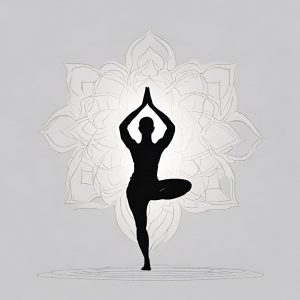Pranayama Yoga: Understanding Its Benefits

Pranayama yoga is an ancient practice that involves breath control to improve physical and mental wellness. In Sanskrit, “prana” means life energy and “yama” means control. Therefore, pranayama is the practice of controlling one’s breath to enhance the flow of prana throughout the body.
There are several different techniques of pranayama yoga, each with its own unique benefits. Some of the most popular techniques include Kapalbhati, Anulom Vilom, and Bhramari. These techniques involve various breathing exercises that can help to reduce stress, improve concentration, and increase lung capacity.
The benefits of pranayama yoga are numerous and well-documented. Some of the most notable benefits include reduced stress and anxiety, improved lung function, and increased mental clarity. Additionally, pranayama yoga has been shown to boost the immune system and improve overall physical health. By incorporating pranayama yoga into your daily routine, you can experience these benefits and improve your overall well-being.
Key Takeaways
- Pranayama yoga involves breath control to improve physical and mental wellness.
- There are several different techniques of pranayama yoga, each with its own unique benefits.
- The benefits of pranayama yoga include reduced stress and anxiety, improved lung function, and increased mental clarity.
Understanding Pranayama Yoga
Pranayama is a Sanskrit word that translates to “breath control.” It is a practice that involves regulating your breath to control your mind, body, and energy. Prana means life force or energy, and Ayama means control or expansion. So, Pranayama is the practice of expanding your life force energy through breath control.
In Pranayama, you focus on your breath, which is the bridge between your body and mind. By controlling your breath, you can calm your mind, reduce stress, and increase your focus and awareness. Pranayama is often practiced in conjunction with asana, or yoga postures, to open up energy channels in the body and prepare for meditation.
There are different types of Pranayama techniques, each with its own unique benefits. Some of the most popular techniques include:
- Puraka: This is the inhalation phase of Pranayama, where you take deep breaths through your nose to fill your lungs with oxygen.
- Kumbhaka: This is the retention phase of Pranayama, where you hold your breath after inhaling to increase your lung capacity and improve your breathing pattern.
- Rechaka: This is the exhalation phase of Pranayama, where you exhale slowly through your nose to release toxins from your body and calm your mind.
Pranayama is also considered the fourth limb of yoga, after asana, or physical postures. It is an essential part of yoga practice because it helps you connect with your breath, body, and mind, and improve your overall well-being.
Different Techniques of Pranayama Yoga
Pranayama yoga is a breathing exercise that involves controlling your breath to improve your physical and mental well-being. There are several techniques of pranayama yoga that you can practice to reap its benefits. Here are some of the most common techniques:
Nadi Shodhana (Alternate Nostril Breathing)
Nadi Shodhana is a breathing technique that involves inhaling and exhaling through alternate nostrils. This technique helps in balancing the flow of energy in your body and calming the mind. To practice Nadi Shodhana, sit in a comfortable position and close your eyes. Place your right thumb on your right nostril and inhale through your left nostril. Then, close your left nostril with your ring finger and exhale through your right nostril. Repeat this process by inhaling through your right nostril and exhaling through your left nostril.
Bhastrika (Bellows Breath)
Bhastrika is a breathing technique that involves deep inhalation and exhalation. This technique helps in improving lung capacity and increasing oxygen supply to the body. To practice Bhastrika, sit in a comfortable position and inhale deeply through your nose. Then, exhale forcefully through your nose. Repeat this process for a few minutes.
Kapalabhati (Skull Shining Breath)
Kapalabhati is a breathing technique that involves short, powerful exhales and passive inhales. This technique helps in improving digestion and increasing lung capacity. To practice Kapalabhati, sit in a comfortable position and inhale deeply. Then, exhale forcefully through your nose while pulling your navel towards your spine. Repeat this process for a few minutes.
Bhramari Pranayama (Bee Breath)
Bhramari Pranayama is a breathing technique that involves making a humming sound while exhaling. This technique helps in calming the mind and reducing stress. To practice Bhramari Pranayama, sit in a comfortable position and close your eyes. Place your thumbs on your ears and your index fingers on your forehead. Inhale deeply and then exhale while making a humming sound.
Kumbhaka (Breath Retention)
Kumbhaka is a breathing technique that involves holding your breath after inhaling or exhaling. This technique helps in improving lung capacity and increasing oxygen supply to the body. To practice Kumbhaka, inhale deeply and hold your breath for a few seconds. Then, exhale slowly and hold your breath for a few seconds before inhaling again.
Practicing these different techniques of pranayama yoga can help in improving your physical and mental well-being. However, it is important to practice them under the guidance of a certified yoga instructor to avoid any potential risks.
Health Benefits of Pranayama Yoga
Pranayama yoga is a breathing technique that has been practiced for thousands of years in India. It is a powerful tool that can improve your overall well-being. Here are some of the health benefits of pranayama yoga:
Reduces Stress and Anxiety
Pranayama yoga can help you calm your mind and reduce stress and anxiety. According to a WebMD article, pranayama yoga can help you cut cravings if you want to quit smoking. It can also increase mindfulness, which can help you manage stress and anxiety.
Improves Lung Function
Pranayama yoga can increase lung capacity and improve lung function. It strengthens the respiratory muscles, including the diaphragm, and can help you breathe more deeply. According to a Fitsri Yoga article, pranayama yoga can increase the oxygen intake of the body, which can improve lung function.
Lowers Blood Pressure
Pranayama yoga can help lower blood pressure and reduce hypertension. It activates the parasympathetic nervous system, which can help you relax and reduce stress. According to a Healthline article, pranayama yoga can also improve heart rate variability, which is a sign of good cardiovascular health.
Improves Digestion
Pranayama yoga can improve digestion and help you relieve constipation. It can also help you reduce bloating and gas. According to a Fitsri Yoga article, pranayama yoga can stimulate the digestive system and improve the functioning of the digestive organs.
Boosts Energy Levels
Pranayama yoga can boost your energy levels and improve mental focus. It can help you stay alert and focused throughout the day. According to a Healthline article, pranayama yoga can increase vital energy and mental clarity.
Improves Overall Well-being
Pranayama yoga can improve your overall well-being and help you feel more relaxed and peaceful. It can also help you sleep better and reduce snoring. According to a PubMed Central article, pranayama yoga can improve immune function and reduce the risk of pneumonia.
In conclusion, pranayama yoga is a powerful tool that can improve your physical and emotional health. It can help you manage stress and anxiety, improve lung function, lower blood pressure, improve digestion, boost energy levels, and improve overall well-being.
Frequently Asked Questions
What are the different types of Pranayama and how do they benefit the body and mind?
Pranayama is an ancient practice of breathing techniques that has been used for centuries to improve physical and mental health. There are many different types of Pranayama, each with its unique benefits. Some of the most common types of Pranayama include:
- Anulom Vilom Pranayama: This breathing technique involves inhaling and exhaling through alternate nostrils. It helps to calm the mind, reduce stress and anxiety, and improve respiratory health.
- Kapalbhati Pranayama: This technique involves rapid exhalations through the nose, followed by passive inhalations. It helps to improve digestion, boost metabolism, and increase lung capacity.
- Bhastrika Pranayama: This technique involves rapid inhalations and exhalations through the nose. It helps to energize the body, improve concentration, and reduce stress.
- Bhramari Pranayama: This technique involves making a humming sound while exhaling. It helps to calm the mind, reduce anxiety and stress, and improve sleep quality.
What are the benefits of Pranayama for the skin?
Pranayama has many benefits for the skin. It helps to improve blood circulation, which in turn helps to nourish the skin cells and keep the skin looking healthy and radiant. Pranayama also helps to reduce stress and anxiety, which can have a negative impact on the skin. By reducing stress, Pranayama helps to prevent premature aging and wrinkles.
How does Bhastrika Pranayama affect the body and mind?
Bhastrika Pranayama is a powerful breathing technique that can have many benefits for the body and mind. It helps to increase oxygen supply to the body, which in turn helps to improve energy levels and reduce fatigue. Bhastrika Pranayama also helps to reduce stress and anxiety, improve focus and concentration, and boost the immune system.
What are the benefits of Bhramari Pranayama?
Bhramari Pranayama is a calming breathing technique that can have many benefits for the body and mind. It helps to reduce stress and anxiety, improve sleep quality, and promote feelings of relaxation and calmness. Bhramari Pranayama also helps to improve concentration and memory, and reduce symptoms of depression.
What are the benefits of Kapalbhati Pranayama?
Kapalbhati Pranayama is a powerful breathing technique that can have many benefits for the body and mind. It helps to improve digestion, boost metabolism, and increase lung capacity. Kapalbhati Pranayama also helps to reduce stress and anxiety, improve focus and concentration, and promote feelings of relaxation and calmness.
What are the 3 key aspects of Pranayama practice?
The three key aspects of Pranayama practice are:
- Proper breathing technique: This involves breathing deeply and slowly, using the diaphragm to inhale and exhale.
- Proper posture: This involves sitting in a comfortable position with the spine straight and the shoulders relaxed.
- Proper mindset: This involves focusing the mind on the breath and being present in the moment.
